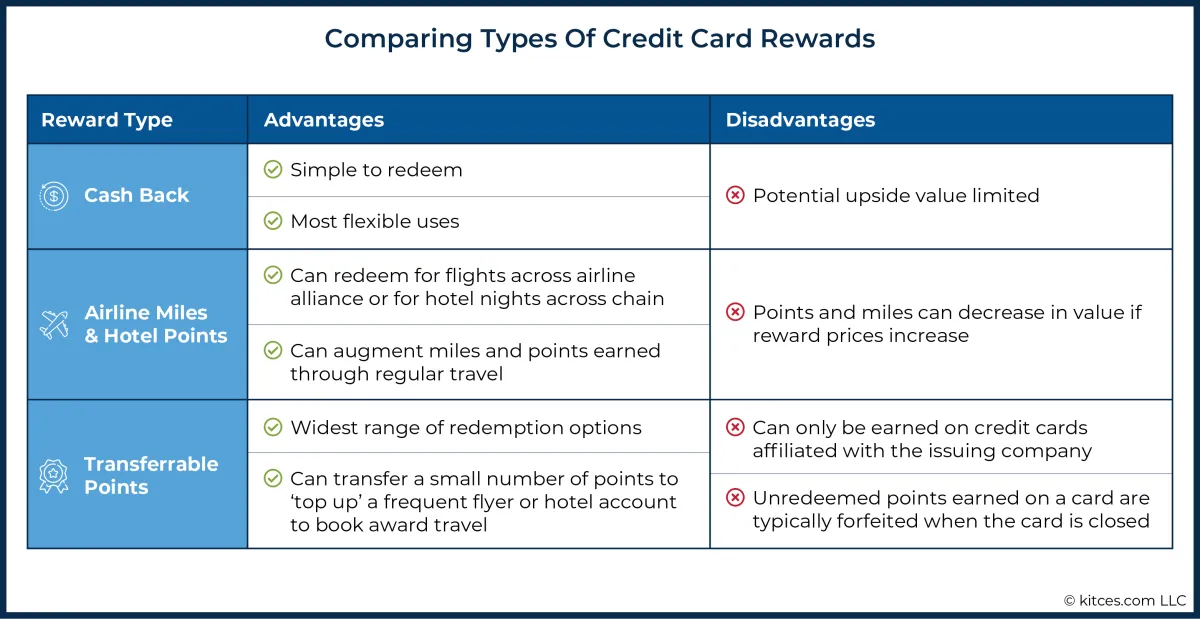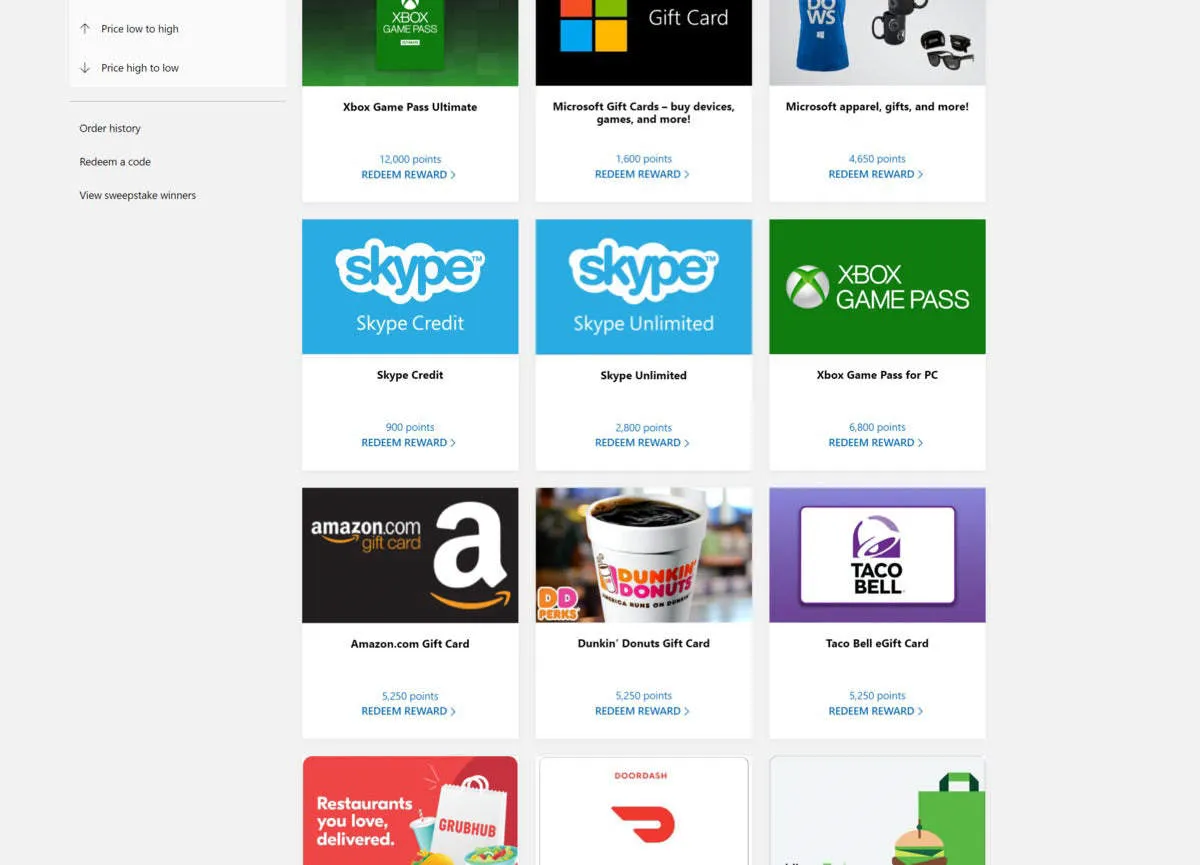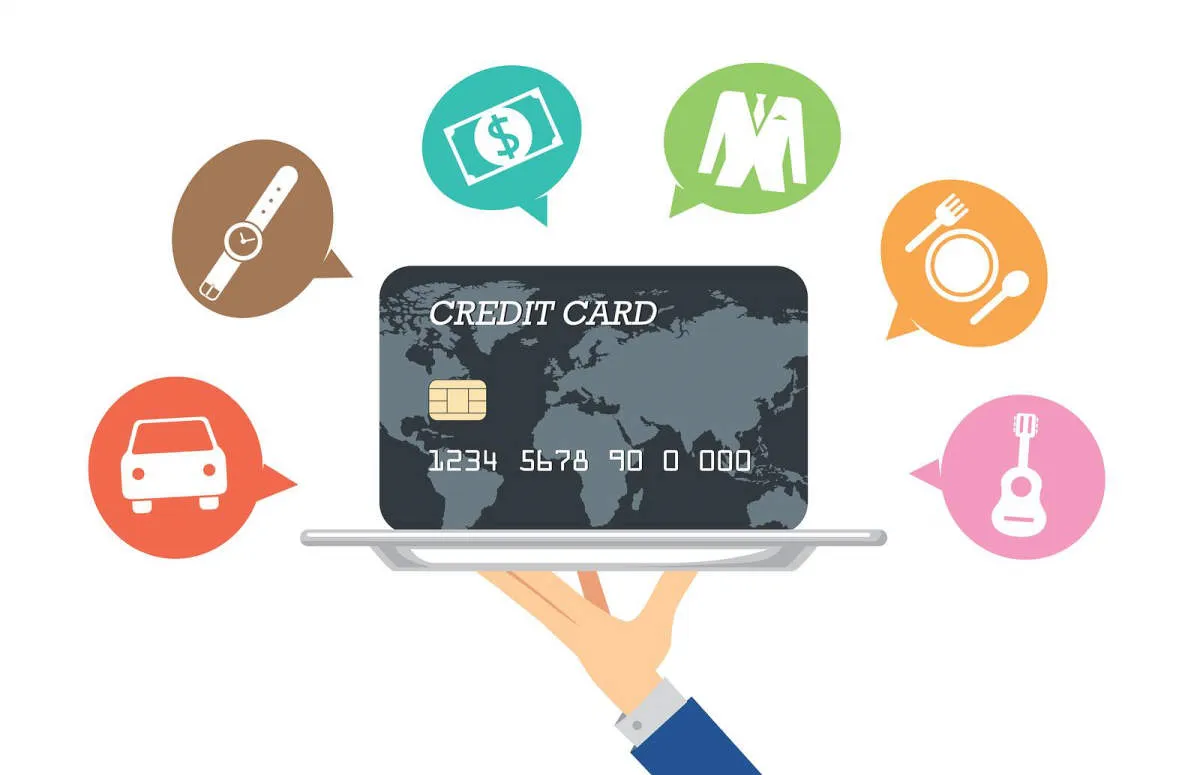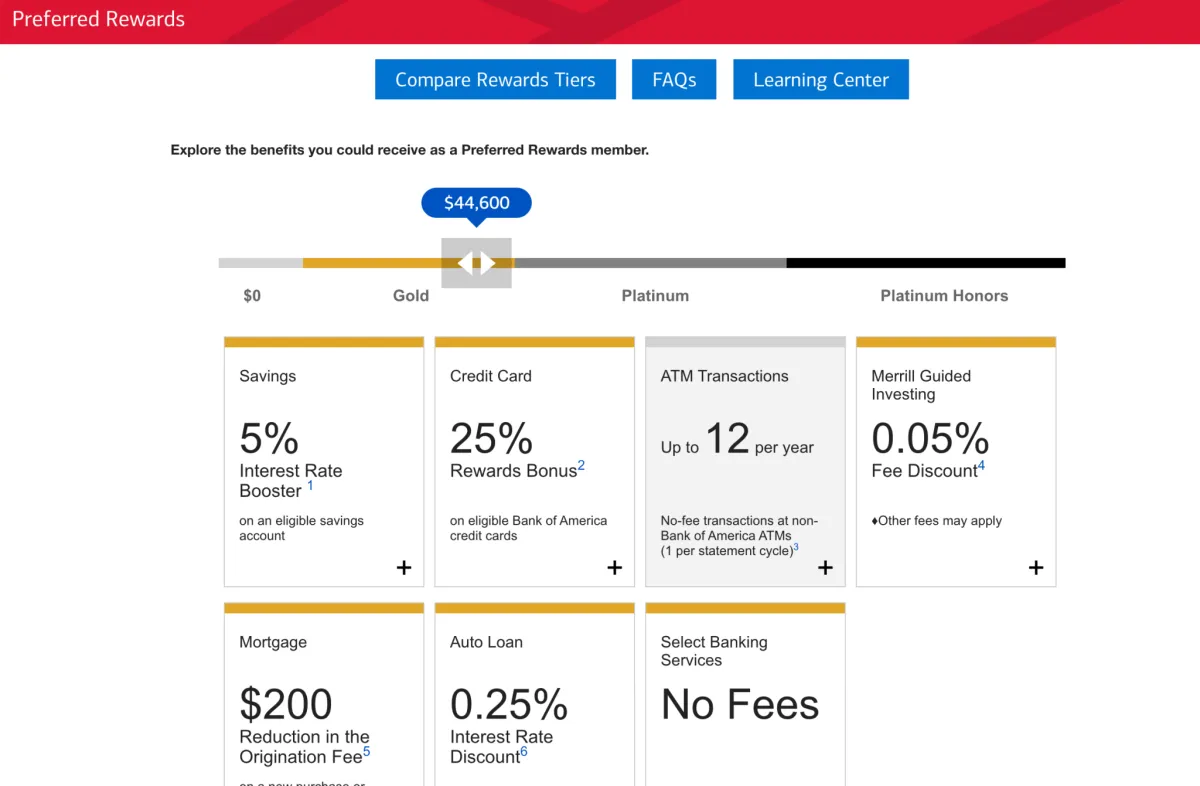Explore the world of credit card rewards programs in our comprehensive guide. From earning points to redeeming rewards, discover the basics of maximizing your benefits in this insightful article.
Types of Credit Card Rewards

Credit card rewards typically fall into a few main categories, each offering different perks and values depending on your spending habits and preferences:
1. Cash Back
Cash back rewards are the most straightforward. You earn a percentage of your spending back, usually ranging from 1% to 5% depending on the card and spending category. Some cards offer higher cash back rates on specific categories like groceries or gas. You can typically redeem cash back as a statement credit, direct deposit, or check.
2. Points
Points offer flexibility. You earn points for every dollar spent, and the value of those points can vary depending on the redemption option. You can usually redeem points for travel, merchandise, gift cards, or even cash back. However, the redemption value of points can fluctuate, and you might get the most value by using them for specific rewards, like travel.
3. Miles
Miles are specifically designed for travel enthusiasts. You earn miles with each purchase, and the number of miles earned per dollar can vary based on the card and spending category. Miles are most valuable when redeemed for flights or hotel stays through the card issuer’s travel portal or partner programs. However, some cards offer limited redemption options or restrict when and where you can use your miles.
4. Other Rewards
While less common, some cards offer niche rewards tailored to specific interests or needs. These can include:
- Hotel Points: Similar to airline miles but specific to hotel chains.
- Retail Rewards: Points or discounts at specific retailers.
- Gas Rewards: Discounts or points redeemable for gas purchases.
How to Earn Points

Earning points in a credit card rewards program is typically straightforward and directly tied to your spending habits. Here’s how it usually works:
- Make Purchases: Every time you use your credit card for eligible purchases, you accrue points. The amount of points earned can vary.
- Bonus Categories: Many cards offer bonus rewards in specific spending categories like dining, groceries, travel, or gas stations. Pay attention to these categories to maximize your points.
- Welcome Bonuses: It’s common for credit card companies to offer a large amount of bonus points as an incentive for new cardholders who meet a minimum spending requirement within a set timeframe.
- Special Offers: Keep an eye out for limited-time promotions from your credit card issuer. These could include bonus points for shopping at certain retailers or for reaching a spending threshold.
Best Ways to Redeem Rewards

So, you’ve been racking up those credit card rewards points. Now what? It’s time to turn those points into tangible benefits! Here’s a look at some of the most common and rewarding ways to redeem your credit card rewards:
1. Cash Back
A classic for a reason! Many cards offer straightforward cash back redemption options. You can typically choose to receive your rewards as a statement credit (reducing your balance), a direct deposit to your bank account, or even a physical check.
2. Travel
For many, travel is the name of the game when it comes to credit card rewards. Most card issuers have their own travel portals where you can use points to book flights, hotels, rental cars, and even cruises. The value of your points can vary, so it’s important to compare redemption rates to get the most bang for your buck (or point!).
3. Gift Cards
Need a gift or want to treat yourself? Redeem your rewards for gift cards to major retailers, restaurants, and entertainment venues. Be aware that some cards offer better value than others for gift card redemptions.
4. Merchandise
From electronics to home goods, many credit card rewards programs let you redeem points for merchandise. Just like with gift cards, the value can fluctuate, so it’s a good idea to compare prices elsewhere before cashing in your points.
5. Charitable Donations
Feeling generous? Some credit card programs allow you to donate your rewards to charitable organizations. This can be a fulfilling way to use your points to make a difference.
6. Transfer to Travel Partners
Some cards offer the valuable option of transferring your points to airline or hotel loyalty programs. This can unlock incredible value, especially for premium cabin flights or luxurious hotel stays. Just make sure to compare the transfer ratios and potential redemption options before you make the transfer.
7. Other Unique Redemptions
Depending on your card, you might find unique redemption options like paying for streaming services, covering the cost of your rideshare, or even investing in your future. Be sure to check out all the options your specific credit card offers.
Choosing the Right Credit Card

With a dizzying array of credit cards available, each promising enticing rewards and perks, finding the perfect match for your spending habits can feel like navigating a financial maze. Don’t be swayed by flashy sign-up bonuses alone. The key is to carefully analyze your spending patterns and prioritize the rewards that align with your lifestyle and financial goals.
1. Analyze Your Spending Habits:
Start by examining your monthly expenses. Identify categories where you spend the most, such as groceries, dining, travel, or gas. Understanding your spending patterns is crucial in determining which credit card rewards will provide the most value to you.
2. Explore Different Reward Structures:
Credit card rewards come in various forms, each catering to different spending preferences:
- Cash Back: Ideal for those who prefer simplicity, cash back cards offer a percentage back on purchases, typically ranging from 1% to 5% or more in specific categories.
- Points: Points offer flexibility and can be redeemed for a wide range of options, including travel, merchandise, gift cards, or even statement credits. The value of points varies depending on the card and redemption method.
- Miles: Geared towards frequent travelers, airline miles cards allow you to accumulate miles that can be redeemed for flights, upgrades, and other travel-related expenses.
3. Consider Annual Fees and Interest Rates:
While rewards are tempting, carefully weigh the associated costs. Some cards come with hefty annual fees, which may outweigh the benefits if your spending isn’t high enough. Similarly, high-interest rates can quickly erase any rewards earned if you carry a balance. Look for cards with low or no annual fees and competitive interest rates.
4. Read the Fine Print:
Before committing to a card, thoroughly read the terms and conditions. Pay close attention to reward earning rates, redemption options, expiration policies, and any limitations or restrictions. Understanding the fine print is crucial to avoid surprises and maximize your rewards.
Maximizing Your Rewards

Earning rewards is great, but maximizing them is even better! Here’s how to make your credit card rewards program really work for you:
1. Strategize Your Spending:
Not all spending is created equal when it comes to rewards. Some cards offer higher rewards rates in specific categories, like dining, travel, or groceries. Analyze your spending habits and choose a card that aligns with your spending patterns to earn the most points or cashback.
2. Utilize Bonus Categories and Rotating Rewards:
Many cards offer bonus rewards on rotating categories, such as 5% cashback on gas stations in one quarter and 5% back on restaurants the next. Keep track of these rotating categories and make sure you’re maximizing your rewards by using the right card at the right time.
3. Take Advantage of Sign-Up Bonuses:
Sign-up bonuses can provide a significant boost to your rewards balance. Pay attention to the spending requirements associated with these bonuses and strive to meet them within the specified timeframe. However, always spend responsibly and avoid unnecessary purchases just to hit a bonus target.
4. Redeem Strategically:
Just as important as earning rewards is redeeming them wisely. Different redemption options often come with different values. For example, redeeming for travel through your card’s portal might yield a higher value per point than redeeming for cash back. Research and compare the various redemption options before making a decision.
5. Explore Card Partnerships:
Many credit card issuers have partnerships with airlines, hotels, and retailers that can amplify your rewards. Transferring your points to a partner program can sometimes unlock better redemption values or exclusive perks.
6. Track Your Rewards and Expiration Dates:
Don’t let your hard-earned rewards go to waste! Keep track of your rewards balance, statement credits, and expiration dates. Set reminders for yourself to ensure you redeem your rewards before they expire.
Understanding Reward Terms

Navigating the world of credit card rewards requires a firm grasp of the terminology involved. These terms often dictate how you earn and redeem rewards, directly impacting the value you extract from your card. Let’s break down some key reward terms:
1. Rewards Currency
This refers to the specific form your rewards take. Common types include:
- Points: Versatile and can be redeemed for a wide range of options, such as travel, merchandise, or statement credits.
- Miles: Primarily geared towards travel, often redeemable for flights and hotel stays.
- Cash Back: The most straightforward option, offering direct credit to your account or a check.
2. Earning Rates
Earning rates determine how many rewards you accumulate per dollar spent. They are often expressed as:
- Flat Rate: Earn a consistent rate on all purchases (e.g., 1 point per $1 spent).
- Tiered Rates: Earn higher rates on specific spending categories (e.g., 3 points per $1 spent on dining).
- Bonus Categories: Offer elevated earning rates on rotating categories that change quarterly or annually.
3. Redemption Options
This refers to the various ways you can utilize your accumulated rewards. Common redemption options include:
- Travel: Redeem for flights, hotels, rental cars, and other travel expenses.
- Merchandise: Redeem for a catalog of products offered by the card issuer.
- Gift Cards: Exchange rewards for gift cards from popular retailers.
- Statement Credits: Offset your credit card bill with your rewards balance.
4. Minimum Redemption Thresholds
Some cards require a minimum rewards balance before you can redeem. This could be a fixed point amount (e.g., 2,500 points) or a specific dollar equivalent.
5. Rewards Expiration
Be aware of potential expiration dates on your rewards. Some programs may forfeit rewards if your account becomes inactive or if you don’t redeem them within a specific timeframe.
Avoiding Common Pitfalls

While credit card rewards programs can be incredibly lucrative, they can also be a source of frustration if you’re not careful. Falling prey to common pitfalls can negate the value of your rewards and even hurt your credit score. Here’s what to watch out for:
1. Overspending to Earn Rewards
This is perhaps the biggest pitfall of all. Don’t fall into the trap of spending more than you normally would just to earn rewards. Remember, rewards are only valuable if you’re not paying interest on your purchases. Make a budget, stick to it, and only charge what you can afford to repay in full each month.
2. Ignoring Fees and Interest Rates
Don’t be blinded by flashy rewards rates. Carefully consider the annual fees, interest rates, and other charges associated with the card. A high annual fee might negate the value of your rewards, especially if you’re not a high spender. Similarly, high interest rates can quickly wipe out any rewards you accumulate if you carry a balance.
3. Missing Payment Deadlines
Late payment fees can be hefty and can offset any rewards you’ve earned. Additionally, late payments can damage your credit score, making it harder to qualify for loans and other financial products in the future. Set reminders or automate payments to avoid missing deadlines.
4. Not Utilizing Rewards
Some rewards programs have expiration dates or blackout periods. Be sure to understand the terms and conditions of your program and make a plan to use your rewards before they lose value.
5. Chasing Sign-Up Bonuses
While sign-up bonuses can be tempting, don’t let them dictate your credit card choices. Focus on finding a card with rewards that align with your spending habits and financial goals in the long term. Excessive applications for new cards can also hurt your credit score.
Using Reward Programs Responsibly

While credit card rewards programs can offer great value, it’s crucial to use them responsibly to avoid potential financial pitfalls. Here are key tips to maximize your rewards without hurting your finances:
1. Don’t Overspend to Earn Rewards
The most important rule is to avoid spending more than you can afford simply to chase rewards. Treat rewards as a bonus, not a reason to overspend. Stick to your budget and only make purchases you would have made anyway.
2. Pay Your Balance in Full Each Month
Credit card interest rates can quickly negate any rewards earned. Always pay your balance in full and on time each month to avoid high interest charges.
3. Track Your Rewards and Expiration Dates
Keep track of your rewards points, miles, or cash back earned. Some programs have expiration dates, so be sure to redeem your rewards before they expire.
4. Understand the Redemption Options
Familiarize yourself with the various redemption options and their value. Sometimes, using points for travel or gift cards might offer better value than cash back, depending on the program.
5. Review and Compare Reward Programs
Reward programs can change, so periodically review the terms and conditions of your credit card agreements. Compare your current card’s benefits with other options to ensure you’re still getting the most value for your spending.
Monitoring Your Rewards

Keeping track of your credit card rewards is crucial to maximizing their value. Don’t let your hard-earned points or miles slip away! Here’s how to stay on top of your rewards:
1. Online Account Access
Most credit card issuers offer online portals or mobile apps where you can monitor your rewards balance, track earning progress, and redeem your rewards. Make it a habit to check your account regularly, at least monthly, to stay informed about your points or miles.
2. Set Up Alerts and Notifications
Many issuers allow you to set up email or text message alerts for various account activities, including reward points earned, points expiring, and redemption confirmations. Activating these alerts can help you stay informed without constantly logging into your account.
3. Review Your Statements
While not as detailed as online portals, your monthly credit card statements usually include a section summarizing your reward points earned and redeemed during the statement period. Take a moment to review this section to ensure accuracy and track your progress.
4. Understand Expiration Policies
Pay close attention to the expiration policies of your rewards program. Some programs have points or miles that expire after a certain period of inactivity or have annual expiration dates. Stay informed to avoid losing any valuable rewards.
5. Utilize Reward Tracking Tools
Consider using third-party reward tracking apps or websites to consolidate information from multiple credit cards and loyalty programs into one platform. These tools can simplify reward management, provide personalized insights, and even alert you to potential reward expirations.
Benefits of Credit Card Rewards

Credit card rewards programs can provide significant value to cardholders who use their cards responsibly. Here are some of the key benefits:
1. Cash Back and Statement Credits
Many credit cards offer cash back on purchases, typically ranging from 1% to 5% depending on the card and spending category. This cash back can be redeemed for statement credits, direct deposits, or gift cards, effectively reducing your overall spending.
2. Travel Rewards
Travel rewards credit cards allow you to earn points or miles on your purchases that can be redeemed for flights, hotels, rental cars, and other travel expenses. These rewards can help offset the cost of travel, making trips more affordable.
3. Points for Merchandise and Gift Cards
Some rewards programs allow you to redeem your points for a wide variety of merchandise, including electronics, appliances, and gift cards. This can be a great option for people who prefer tangible rewards or want to use their points for specific purchases.
4. Exclusive Perks and Benefits
In addition to rewards points, many credit cards offer exclusive perks and benefits to cardholders, such as airport lounge access, travel insurance, extended warranties, and purchase protection. These perks can enhance your overall travel and shopping experiences.
5. Building Credit History
Using a credit card responsibly and paying your bills on time can help you build a positive credit history, which is essential for obtaining loans, mortgages, and other financial products in the future.
Conclusion
In conclusion, understanding the basics of credit card rewards programs is essential for maximizing benefits and making informed financial decisions.

